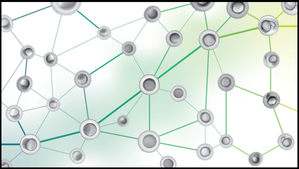AI can better recognise tempo, stages of embryonic development
Researchers are now developing and using methods based on artificial intelligence (AI) to recognise the tempo and stages of embryonic development.
In a study published in the journal Nature Methods, researchers at the University of Konstanz in Germany, led by systems biologist Patrick Muller, describe a novel approach that automatically captures the tempo of development processes and recognises characteristic stages without human input.
Animal embryos go through a series of characteristic developmental stages on their journey from a fertilised egg cell to a functional organism.
Yet, there are differences in the details – between individual species and even among embryos of the same species.
For example, the tempo at which individual embryonic stages are passed through can vary. Such variations in embryonic development are considered an important driver of evolution, as they can lead to new characteristics, thus promoting evolutionary adaptations and biodiversity.
“Embryos often do not look exactly the same under the microscope as they do in the schematic drawings. And the transitions between individual stages are not abrupt, but more gradual,” explained Muller.
Embryonic development does not always follow the expected timetable.
“Various factors can influence the timing of embryonic development, such as temperature,” Muller said.
The AI-supported method he and his colleagues developed is a substantial step forward.
For a first application example, the researchers trained their Twin Network with more than 3 million images of zebrafish embryos that were developing healthily. They then used the resulting AI model to automatically determine the developmental age of other zebrafish embryos.
The researchers were able to demonstrate that the AI is capable of identifying key steps in zebrafish embryogenesis and detecting individual stages of development fully automatically and without human input.
In their study, the researchers used the AI system to compare the developmental stage of embryos and describe the temperature dependence of embryonic development.
Although the AI was trained with images of normally developing embryos, it was also able to identify malformations that can occur spontaneously in a certain percentage of embryos or that may be triggered by environmental toxins.
“Once the necessary image material is available, our Twin Network-based method can be used to analyze the embryonic development of various animal species in terms of time and stages,” the authors noted.

